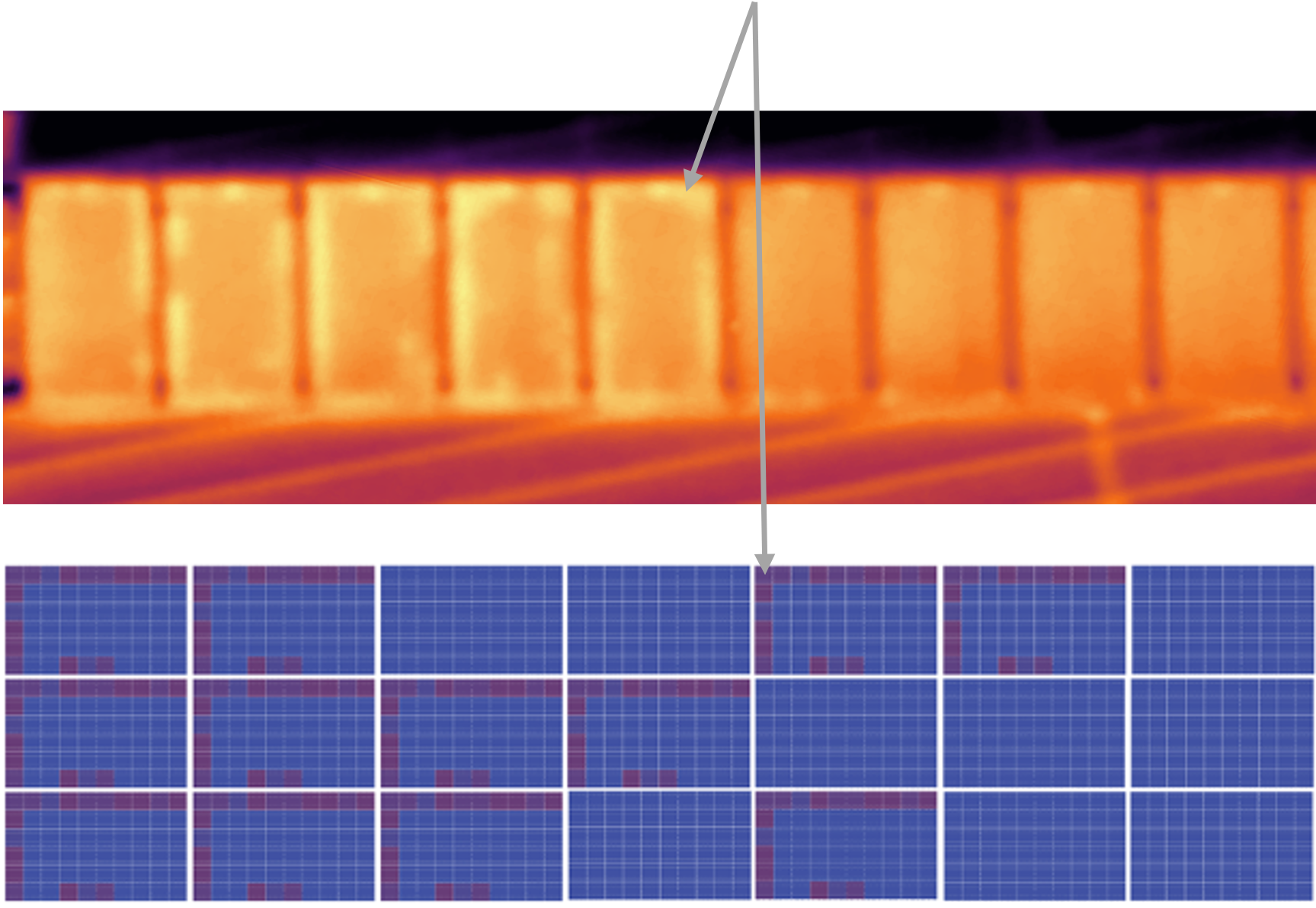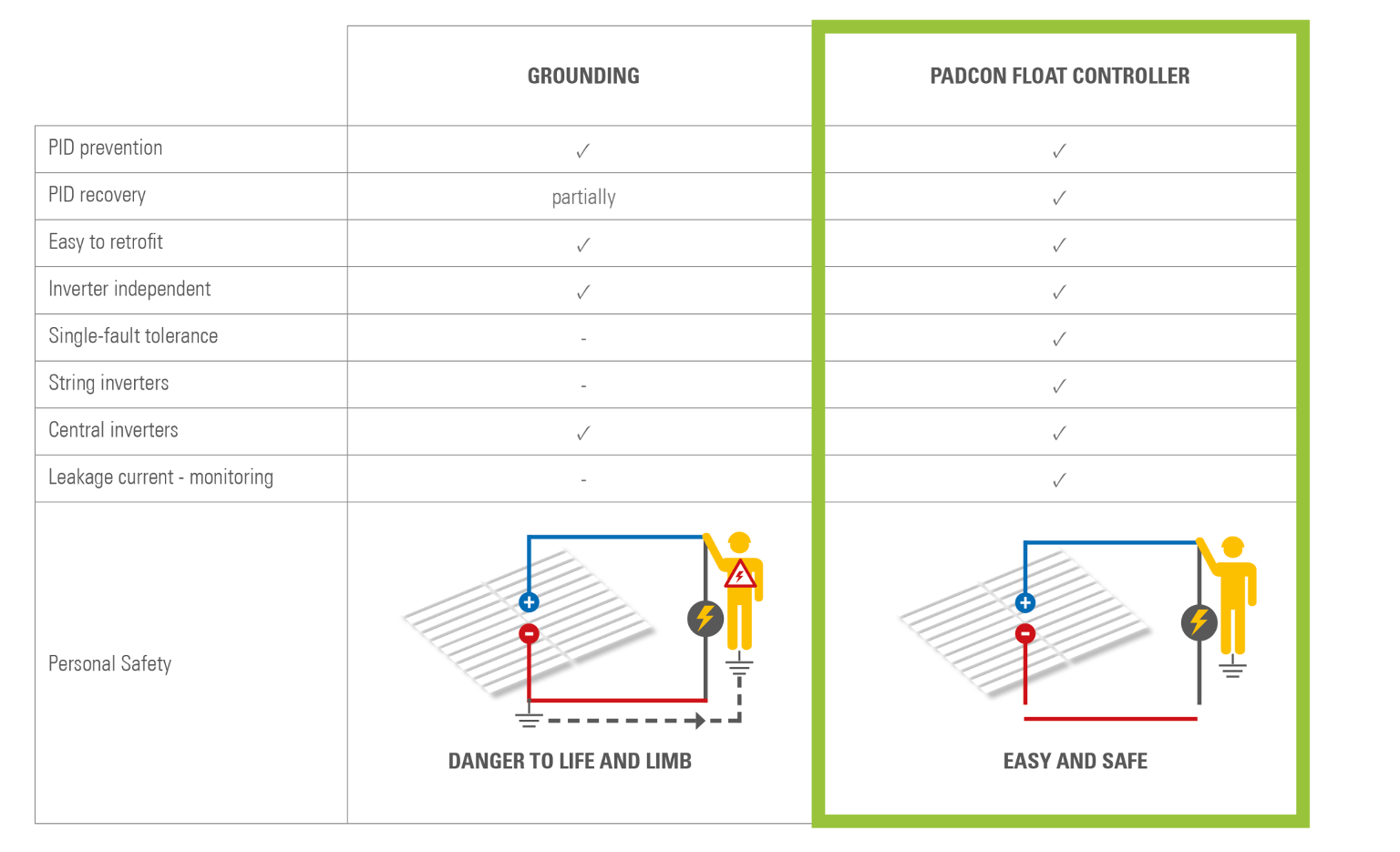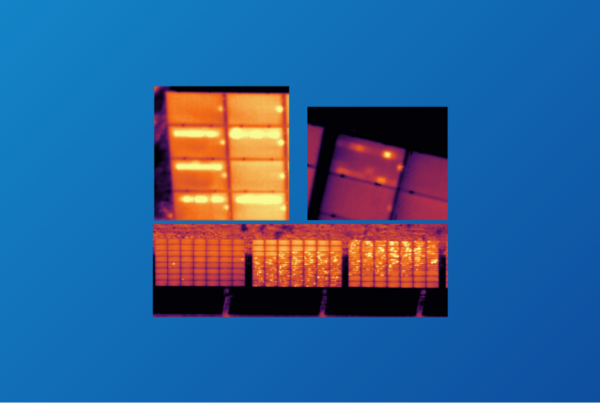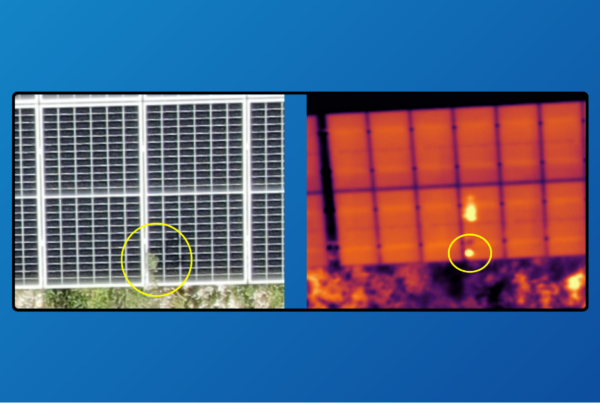Solar power has become a popular and sustainable energy source, but Potential-Induced Degradation (PID) can significantly affect PV modules’ performance.
In 2022, Sitemark detected 60.000 PV modules worldwide affected by Potential-Induced Degradation.
This blog will discuss what causes PID, how to detect it, and most importantly, how to mitigate its effects.
What is Potential-Induced Degradation (PID) exactly?
The short explanation: It is current leakage. It’s a chemical reaction where the negative ions move from the aluminum frame and the positive ions move toward the solar cell. PID-affected modules spread from the negative pole to the positive pole of the string, and usually, you have less PID on the positive pole, except when it has completely spread over time.

The temperature difference is subtle, about 2° Celcius Delta T, and is noticeable in multi-hotspots closer to the positive modules in the early stages.
PID can lead to a significant reduction in power output. In some cases, the power loss can be as high as 30%, making PID one of the more destructive anomalies.
What causes PID?
There are multiple causes of PID:
- Environmental conditions: if your modules are located in a hot and humid location, your modules are more prone to be affected by PID.
- Quality of raw materials: the quality of the raw materials of the glass & the PV module components (i.e., type of photovoltaic cells, material encapsulated)
- The inverter type
- The module brand
- The module type: PID on crystalline modules is reversible, while PID on thin film modules is not
- Voltage and system size: the number of modules per string and how they are wired impact the development of PID. But also, the grounding of the PV module frames, the piles, etc., greatly impacts the cause.
How can you detect PID?
There are four ways to detect PID, but not all are equally efficient.
- Aerial thermography is the most efficient way to detect PID, but perhaps not 100% accurate. However, scanning your site twice a year allows you to detect PID early. Having a highly accurate & sensitive platform is, given the subtle difference in the Delta temperature, key.
- Electroluminescence: EL testing is undoubtedly a 100% reliable way to detect PID. Besides taking place at night, the downside is that it is costly and requires much more effort in the field with special equipment. EL is only performed on a representative sample, only showing a small part of which modules are infected.
- IV Curve tracing: This method also requires extra field effort. You must do the IV curve for specific modules to prove that you have PID in a string.
- Performance monitoring: this is the least common way to detect PID. If you suspect having PID using your monitoring system, you are probably detecting PID in an advanced stage.
If you are looking for a cost-efficient method to detect PID early on, aerial inspection is the best approach.

How to mitigate PID?
When caught early, PID is reversible, but more companies are shifting to prevention rather than remediate.
The root cause is, in most cases, the grounding of the PV system. Many EPCs install a Ground Fault Detector/Interrupter (GFDI), but this is not the safest solution. A system with negative grounding creates a path for electricity to flow. If you touch a circuit part of this path, you become part of the electric circuit yourself, resulting in potential lethal electrocution.
To ensure the staff’s safety on site, the GFDI must be disconnected by a technician on-site or remotely. This is inefficient as the site is meanwhile not producing, and it is a long process, making it difficult to be a scalable solution.
The most reliable & cost-effective solution is installing a float controller. The float controller eliminates the potential difference between the solar module and the ground. This is done by creating a floating system that isolates the solar panel from the ground, thus preventing any electrical current from flowing through the module. By installing such a system, the PID effect is significantly reduced, resulting in improved performance and increased longevity of the PV module system.

In summary, it is essential to be aware of Potential-Induced Degradation (PID), detect it early, and implement appropriate mitigation strategies to ensure PV module systems’ long-term performance and durability.
If you want to learn more about PID, check out our webinar! Or get in touch to discuss how you can optimize your site’s health.




